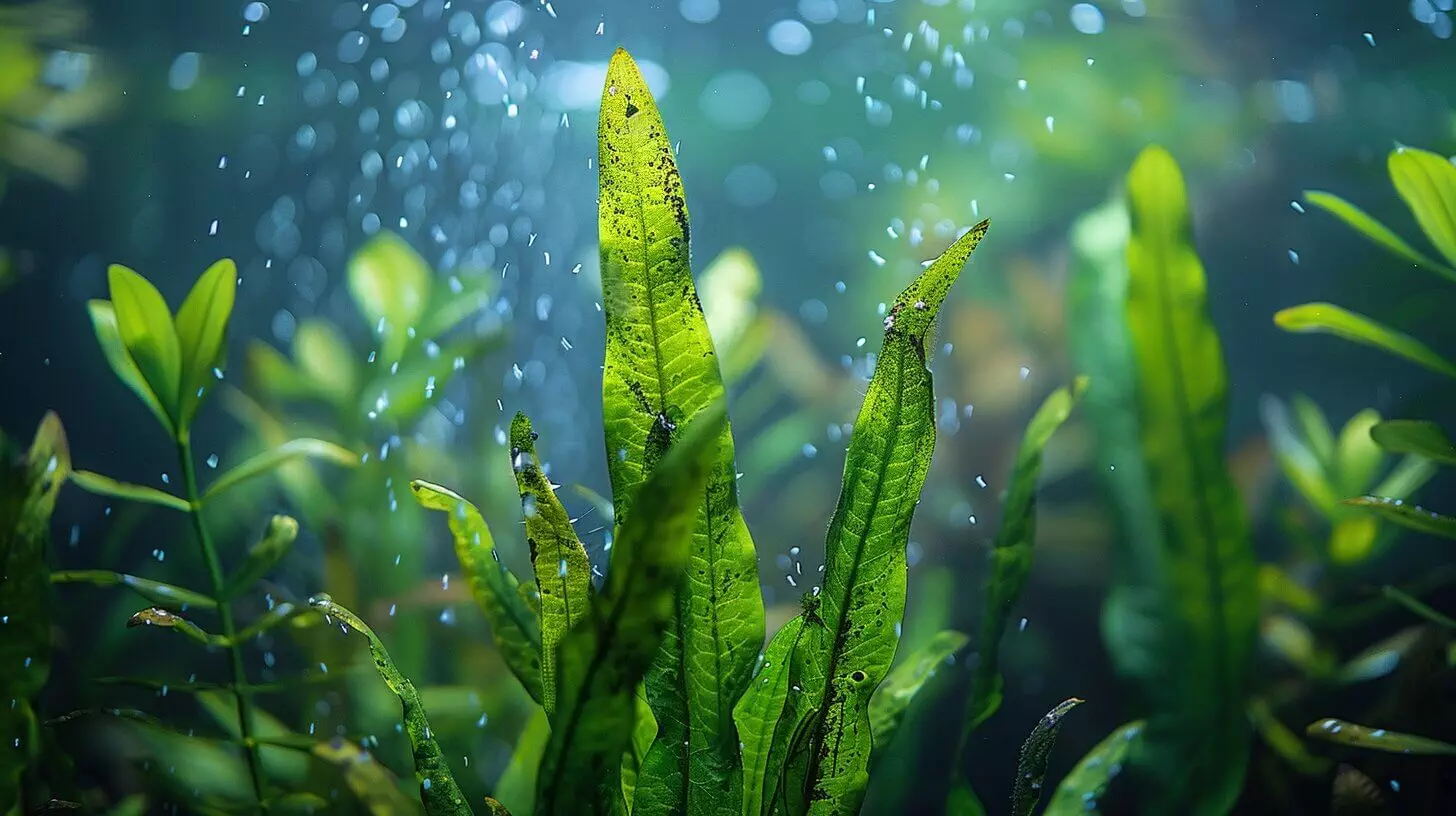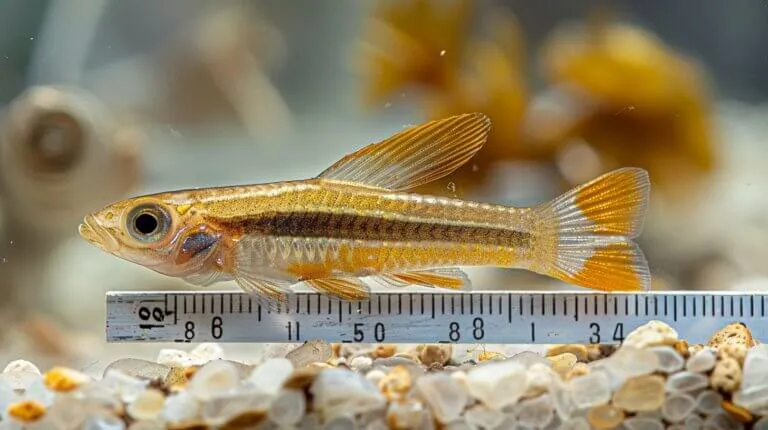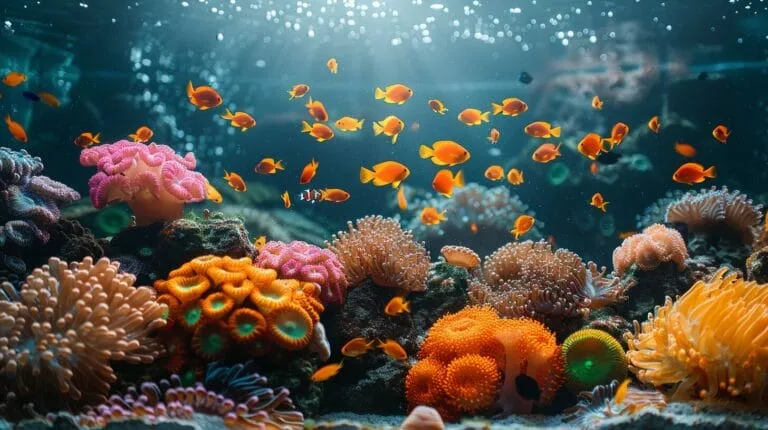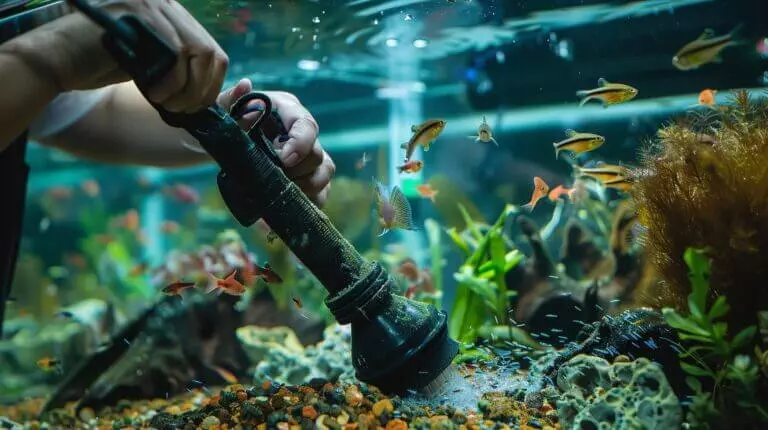When dealing with Black Beard Algae (BBA) in our aquariums, it’s important to recognize those pesky dark green or black tufts that seem to multiply overnight. From introducing algae eaters to employing advanced techniques like CO2 injection systems, we’ve got several strategies to explore. Curious about these methods and how to prevent BBA’s return? Let’s get into it.
Key Takeaways
- Black Beard Algae appears as black or dark green tufts clinging to plants, decorations, and substrates.
- Fluctuating CO2 levels are a major cause of Black Beard Algae growth in aquariums.
- Introduce algae eaters like Siamese algae eaters or Amano shrimp to help control BBA.
- Use liquid treatments containing glutaraldehyde and spot-treat with diluted hydrogen peroxide for effective removal.
- Maintain consistent water changes and monitor CO2, nitrate, and phosphate levels to prevent BBA recurrence.
Understanding Black Beard Algae (BBA) in Aquariums

Black Beard Algae, abbreviated as BBA, is a persistent algae type that can become an aquarium’s major problem. This fuzzy, dark algae can take over beautifully curated aquatic landscapes, especially smothering slow-growing plants like Anubias.
Recognizing BBA is the first step in taking control. It appears as black or dark green tufts that can cling to plants, decorations, and even the substrate. If we see these telltale signs, we must act quickly to prevent further spread.
Fluctuating CO2 levels are a major cause of BBA growth. Inconsistent CO2 creates perfect conditions for this stubborn algae to thrive. Thus, maintaining stable CO2 levels is crucial. Using a liquid carbon product can also deter new algae growth and cause existing BBA to subside.
Effective Methods to Get Rid of Black Beard Algae

Eliminating Black Beard Algae can be challenging, but the right methods can help reclaim your aquarium. First, consider introducing algae eaters, such as Siamese algae eaters or Amano shrimp, which naturally control BBA by grazing on it.
Liquid treatments containing glutaraldehyde can effectively kill BBA. However, we need to follow instructions closely to avoid harming plants like Anubias or Java Ferns.
Manual removal using a soft brush is a chemical-free way to maintain a clean tank, even though it can be labor-intensive.
Here’s a comparison of methods:
| Method | Pros |
|---|---|
| Algae Eaters | Natural, continuous control |
| Liquid Treatments | Effective, quick results |
| Manual Removal | Chemical-free, immediate results |
| Combination of Techniques | Thorough, multi-faceted approach |
| Regular Maintenance | Prevents future outbreaks |
Natural Ways to Remove Black Beard Algae from Your Tank

Natural methods can help remove Black Beard Algae without relying on chemicals. Healthy, thriving plants can outcompete BBA for nutrients, making it harder for the algae to establish itself. Planted tanks rich in various species can create a balanced ecosystem that naturally curbs algae growth.
Adjusting CO2 levels is another essential strategy. BBA thrives in low CO2 environments. By increasing CO2 levels, we create conditions less favorable for the algae but beneficial for our plants.
Frequent water changes remove excess nutrients that BBA feeds on. Aim for a water change of about 25-50% every week to keep nutrient levels in check.
Lastly, spot-treating affected areas with a diluted hydrogen peroxide solution can tackle stubborn patches without harming our plants.
Preventing Black Beard Algae from Recurring in Your Aquarium

While natural methods effectively manage BBA, maintaining a clean and balanced tank is key to preventing its recurrence. Regular maintenance, like consistent water changes and cleaning, help remove excess nutrients that BBA thrives on.
Overfeeding our fish can lead to decomposed uneaten food, which spikes nutrient levels, feeding the algae. By feeding our fish only what they can consume in a few minutes, we keep the nutrient load manageable.
Monitoring and maintaining proper levels of CO2, nitrates, and phosphates are also essential. Black Beard Algae tends to flourish in tanks with fluctuating CO2 levels and high phosphates. Using a reliable test kit to check these parameters regularly can help us catch imbalances before they become problems.
Advanced Techniques for Long-Term Control of Black Beard Algae
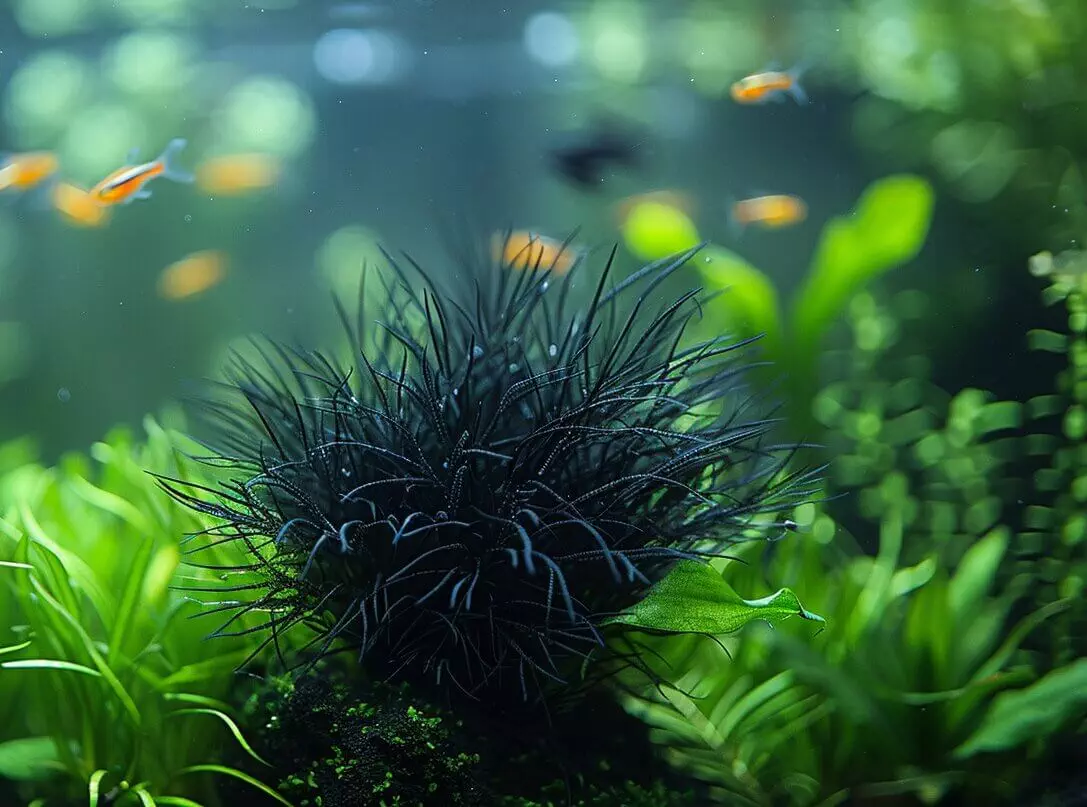
Advanced techniques like a CO2 injection system can enhance long-term control over Black Beard Algae. Boosting CO2 levels creates an environment that promotes healthier plant growth, outcompeting the algae for essential nutrients.
UV sterilizers eliminate free-floating algae spores, preventing them from settling and proliferating. By integrating UV sterilizers into our aquarium setup, we can significantly reduce the recurrence of Black Beard Algae and maintain a cleaner, clearer tank.
Moreover, advanced filtration methods play an essential role in maintaining high water quality. High-efficiency filters remove organic waste and excess nutrients that algae thrive on. Proper circulation prevents stagnant areas where algae can grow unchecked.
Conclusion
In tackling Black Beard Algae, we’ve learned that consistent maintenance and monitoring are key. By combining effective removal methods, natural strategies, and preventive measures, we can keep our aquariums in top shape.
Advanced techniques like CO2 injection and UV sterilizers offer long-term control, ensuring a healthy environment for our aquatic friends. Let’s stay vigilant and proactive, so our tanks remain vibrant and free of this stubborn algae.
Happy fish-keeping!
Frequently Asked Questions
What is Black Beard Algae?
Black Beard Algae is a type of pesky algae that commonly appears in fish tanks. It has a black, fuzzy appearance and can be challenging to get rid of. Many hobbyists struggle with controlling Black Beard Algae due to its ability to thrive in low-light conditions and low nutrient levels. In addition to battling Black Beard Algae, aquarium owners may also find themselves removing green hair algae, another common nuisance in fish tanks. Both types of algae can be deterred by maintaining a proper balance of light, nutrients, and water quality in the tank.
What are the causes of Black Beard Algae in a planted aquarium?
Black Beard Algae can be caused by a variety of factors, including fluctuating CO2 levels, contaminated plants, high levels of ammonia, and inadequate water flow.
How can I identify Black Beard Algae on plant leaves?
Black Beard Algae typically appears as dark, fuzzy patches that cling to the edges of plant leaves and hardscape in the tank.
What are some tips for removing Black Beard Algae from the aquarium?
To remove Black Beard Algae, you can manually remove as much as possible, utilize algae-eating fish like Siamese Algae Eaters or American Flag Fish, and consider using chemical treatments like Seachem Excel.
How can I prevent Black Beard Algae from growing in my aquarium in the first place?
To prevent Black Beard Algae, ensure stable CO2 levels, maintain proper water parameters, avoid introducing contaminated plants, and keep the tank clean from detritus buildup.

